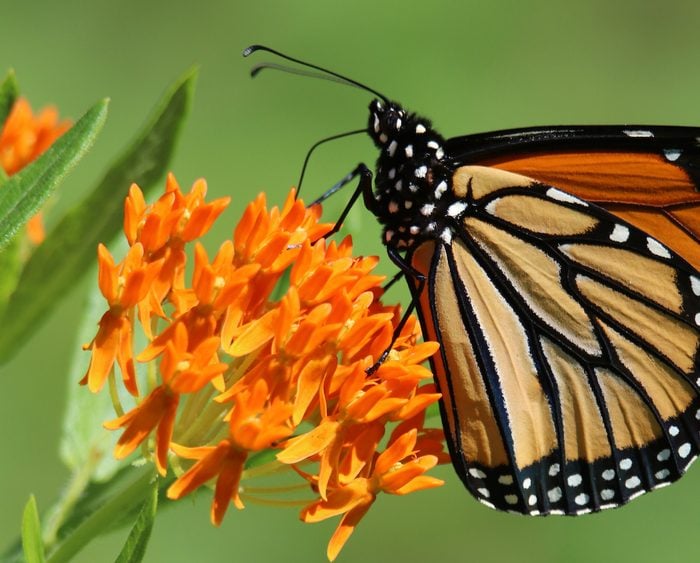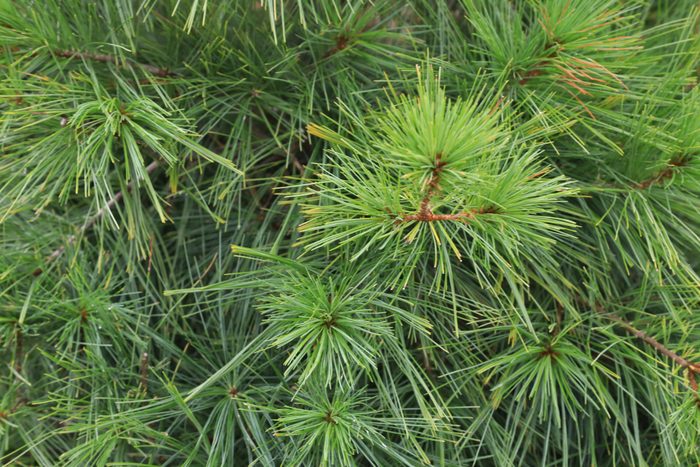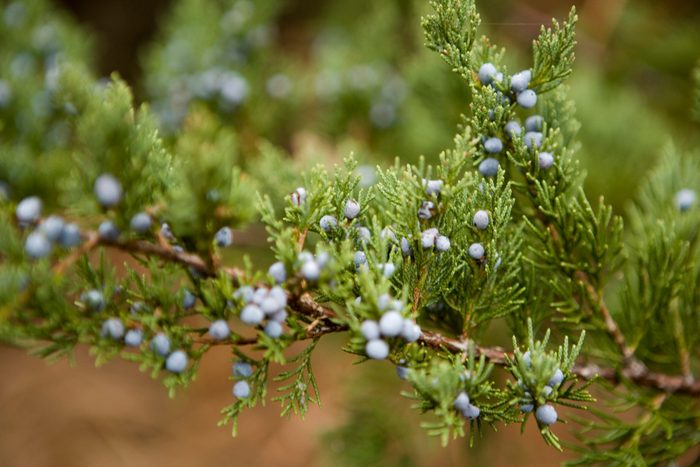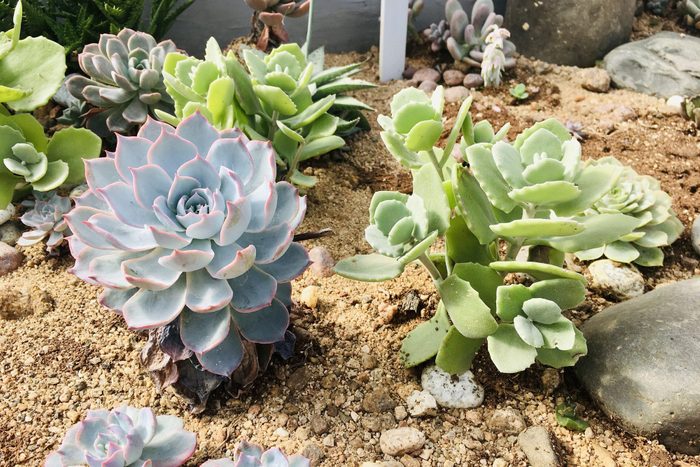
For both style and substance, drought tolerant succulents are tops on today’s horticultural hit parade. Their striking appearance and incredible variety appeal to every aesthetic. From cactus spines to undulating crests, succulents offer endless diversity in shape and form. Plant flowers, and you could spend months waiting for them to burst into beautiful bloom. Plant a succulent, and the beauty is already there.
From front yards to rooftops, wedding bouquets to living jewelry, succulents have become superstars both in and out of the garden. Here are some of our favorites that live up to their drought tolerant, beautiful reputation.
Check out the top 10 flashy flowering succulents to grow.
7 Drought Tolerant Succulents for Beginners
A good rule for the new succulent gardener is—if it’s easy to find, it’s easy to grow. However, the more popular succulents become, the more varieties are widely available for sale. So if you are looking for proven performers that will give you success, look no further than these drought tolerant succulents.
Hens and Chicks
Hardy in cold climates, these rough-and-ready rosettes are among the few succulents that embrace frost conditions, surviving down to a chilly Zone 3. The rich violet plum of Purple Mojo is an instant favorite!
Grow a flock of hens and chicks plants.
Echeverias
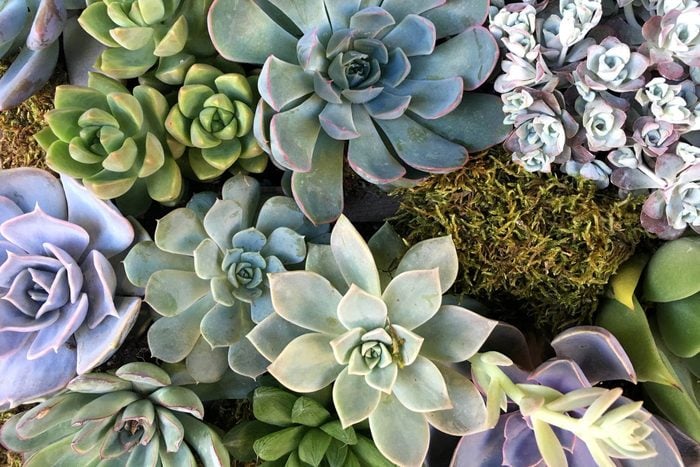
Its leaves splay open like lotus petals, giving you a gorgeous flower all year round. Morning Light, in a gorgeous, hazy-blue hue, is an easy-to-grow cultivar for beginners.
Aeoniums
Super easy-grow plants with leaves that form big beautiful flower-like heads. Try the dark, rich cultivar Zwartkop.
Agave
Many agaves are large, expensive and aggressive. Overcome these obstacles by cultivating a compact variety of these spiky mounds in a container. The jade and cream variegated victoriae-reginae White Rhino agave is a stunner.
Sanseverias
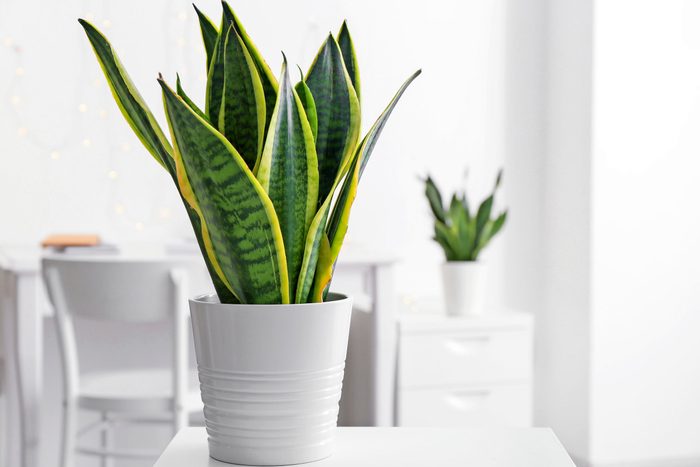
Likely you’ve heard of the snake plant, famous for being a hard-to-kill houseplant. This most common variety sends thick, variegated leaf blades a foot into the air. For a spin, try the swirling cultivar, Twist.
Crassulas
Jade plants, or Crassula ovata, are the most commonly sold of this pudgy plant group. If you prefer the look of little trees, try the fiery Crassula capitella ‘Campfire.’
Discover succulents that will attract pollinators.
Sedums
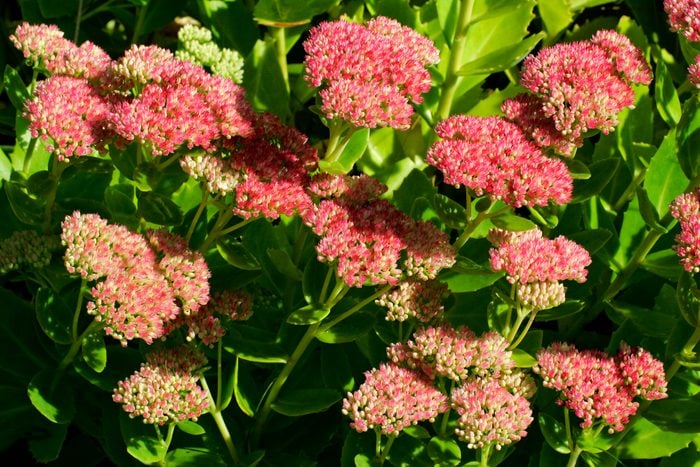
From ground covers to plants reaching 18 inches tall, this genus offers a wide selection, with many cultivars able to tolerate the cold. Elizabeth, for example, is hardy from Zones 3 to 8, and its long-blooming red flowers give way to red foliage in fall.
Check out the top 10 stonecrop sedum varieties to grow.
Succulent Watering Needs
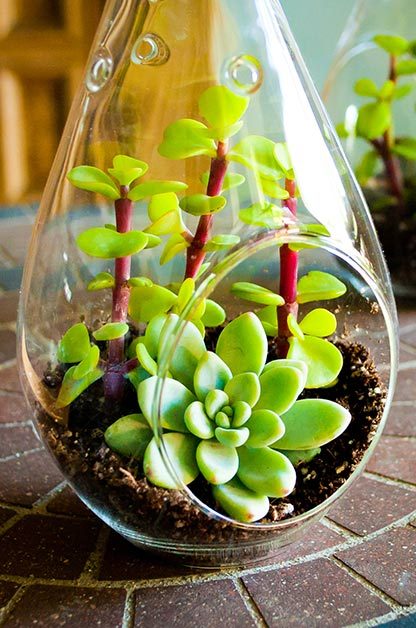
Because they’re born in harsh environments, you’d be hard-pressed to find hardier water wise plants. Succulents’ leaves and stems are built to store water from infrequent bursts of rainfall that quickly trickle through dry soil. On top of that, their leaves have a thick, often waxy surface with the ability to close its pores rather than lose water through respiration. Together, these adaptations minimize water loss drastically.
For you, that means your drought tolerant succulents can go without a drink while you’re on vacation, and it won’t faze them one bit. And while your other plants wither during summer droughts, it’s your succulents’ time to shine. All this means less time maintaining your succulents, with much more time to relax and enjoy.
Learn how to grow a succulent container garden.
The Best Soil for Succulents
Wild succulents grow in well-draining soil, often on slopes or in rocky crevices, where the tilt assists with draining. Test your landscape location by spading out about a gallon-size hole and pouring in the same amount of water. Standing water after a few minutes means you’ll need to amend the soil with porous material or, better yet, plant in a container. Select a container deep enough to ensure that your succulent’s roots are never waterlogged, which leads to root rot.
Even specialists debate the precise recipe for the perfect succulent soil mix. Some say any commercial mix made for succulents and cacti is fine, while others warn that these mixes have a bit too much organic matter. Many recommend adding porous material in varying amounts. Perlite, pumice, sand, pea gravel, granite or grit: whether or not to add these and in what amount varies by grower.
As long as you don’t use unamended regular potting soil, you’ll probably be fine. Look around at what other people growing the same cultivars are using, and keep in mind that, while many folks use slightly different soil mixes, they all have happy, healthy succulents.
Designing With Drought Tolerant Succulents

Have you seen the amazing things people do with drought tolerant succulents? From gorgeous ground covers to dramatic single plants, succulents are the hot—and smart—answer to water, soil and space conservation.
Planting a succulent rooftop is a stunning and energy-efficient way to double your garden space. The vertical gardening concept has grown from small, charming picture frames to sprawling, museum-quality murals. From spelling out names and initials to covering three-dimensional topiary forms, succulents can say it all.

The same root structures that enable succulents to crop up on rocky hillsides make them adaptable to pretty much any container, no matter how offbeat. You can plant them in seashells, toy trucks, high heels, coffee pots, and more. Terrariums make a perfect habitat for some succulents, provided you let them drain and dry thoroughly after watering.
Check out 10 seriously cool succulents that make great houseplants.
Smell that? The fragrance of fresh herbs is absolutely divine. Snippets of fresh basil are mingling with pasta sauce. If you crave seductive scents like this all year long, growing fresh herbs will do the trick. Whether you’re tilling a full vegetable garden out back or tending a few small containers in your windowsill kitchen garden, you’ll find success by picking the best herbs to grow for cooking.
For growing tips, check out Andrea Bellamy’s book Sugar Snaps and Strawberries. You’ve likely tried to grow basil and oregano, but this book will inspire you to branch out. That will mean even more flavorful meals from the kitchen.
These top 10 herbs to grow for cooking are not only wonderful to sniff and taste, they’ll save you time and money when you plan menus. Best of all, many can be dried for use all year long. Look for them from our friends at Bonnie Plants. With so many herb varieties to choose from, you’ll find just the right ones to add tempting aromas to your kitchen.
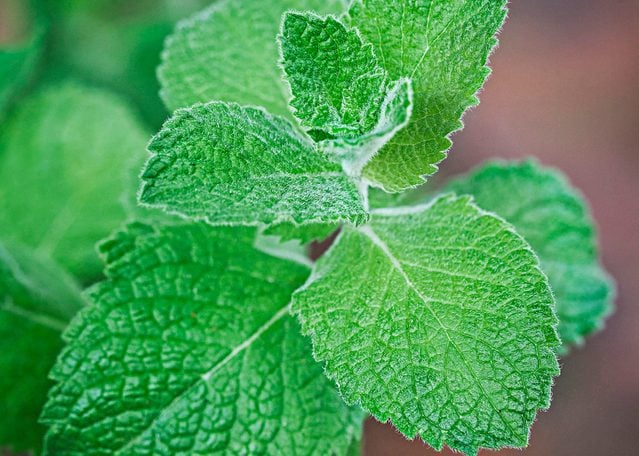
On This Page
Apple Mint
Helianthus annuus, Zones 5 to 9
One of the easiest herbs to grow, apple mint is a natural for containers or other small spaces. While you’ll enjoy the mint flavor, the unexpected fruity tones are delightful, too. Be sure to keep up with the wandering ways of this herb and pick leaves frequently. With container plants, tucking stray mint back into the pot will help control growth.
Tastes great in: Two things to try: Add crushed leaves to ice water for a refreshing summer drink, or steep in hot water for tea.
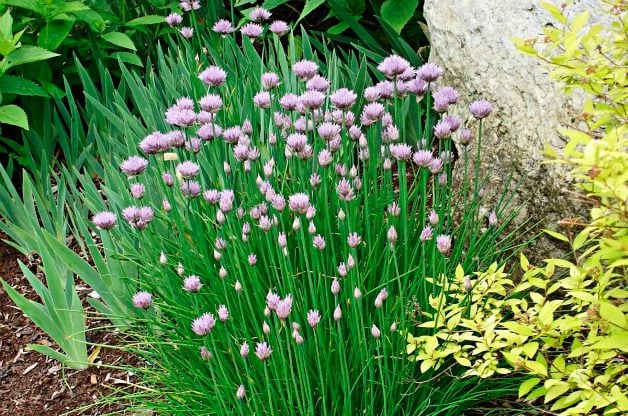
Chives
Allium spp. , Zones 3 to 9
Versatile chives impart a subtle oniony flavor to food. Deadhead or grow in containers to keep these plants in check. With their mauve flowers, chives are pretty as edging plants for beds and filler plants for containers. Harvest from spring through fall. Learn how to grow, harvest and use chives.
Tastes great in: Try adding chives to all kinds of vegetables; just sauté in oil along with some garlic for a tasty side dish. Or impress your guests by adding chive flowers to a salad.
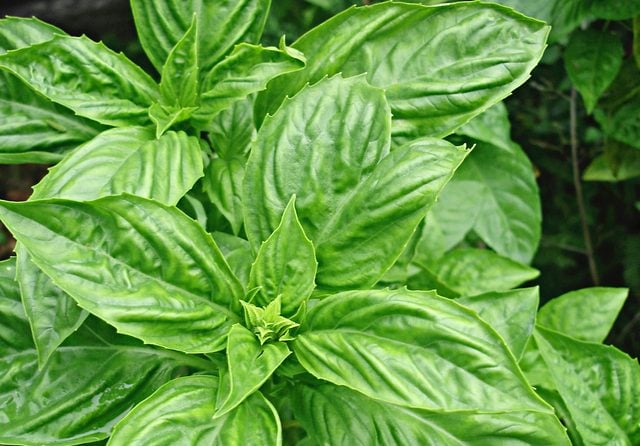
Basil
Ocimum spp., annual
The spicy-sweet flavor and aroma of basil have made it one of the top herbs to grow. Harvest often. Pinch off the tips of the stems to a fresh set of leaves. Make sure you do this regularly for best growth. A favorite in Asian and Italian cooking, basil grows marvelously in containers. Basil seeds can begin indoors 4 to 6 weeks before the last frost. At the end of the season, freeze or dry what’s left. Discover mistakes you may be making with fresh basil.
Tastes great in: While basil is delicious in almost any Italian dish, don’t be afraid to take another approach. For a simple vinaigrette or marinade, heat white wine vinegar and pour over fresh basil. After 24 hours, strain and discard leaves.
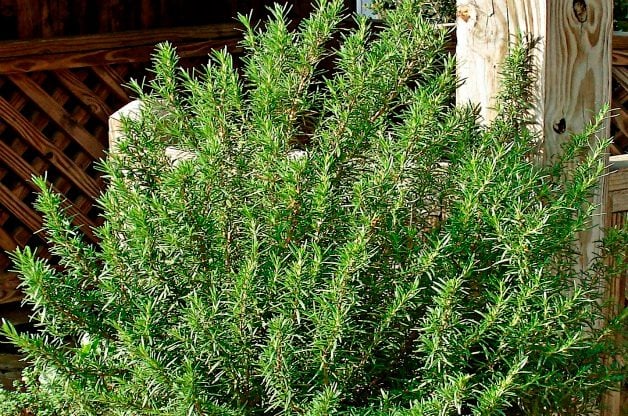
Rosemary
Rosmarinus officinalis, Zones 8 to 11
Rosemary is a Mediterranean herb that needs full sun and well-drained soil. It’s hard to replicate these conditions indoors but I’ve had success by supplementing with a grow light. I don’t overwater, but I do mist daily (keep a decorative hand sprayer on the windowsill as a reminder). For container planting, use pots at least 8 inches deep. In cool climates, overwinter rosemary indoors, but keep an eye out for powdery mildew. If you’re looking for an edible yet substantial shrub, rosemary will fit your yard beautifully. In milder regions, you can even trim it as hedge.
Tastes great in: Add rosemary to any poultry dish and you’ll have a crowd-pleaser. Use the edible flowers in salads, herb butters and cream cheese spreads.
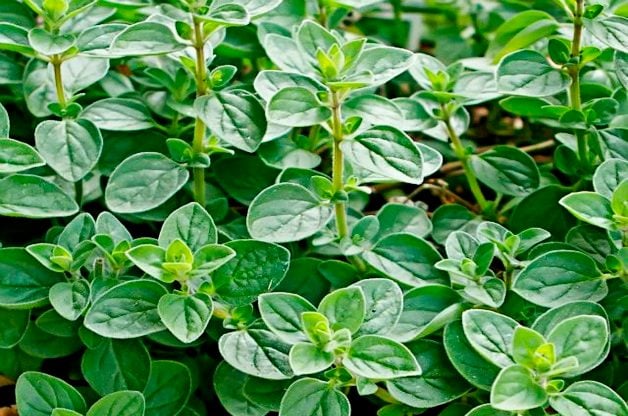
Oregano
Origanum spp., Zones 5 to 10
Oregano is a sun lover and offers the best harvest when given plenty of light. In spring and summer, a bright south-facing window should provide enough light. In autumn and winter, add a grow light. Though it’s similar to marjoram, frost-tolerant oregano is a safer choice for cold climates. Drying oregano increases its flavor. Simply cut whole stems, hang them in a cool, dry place, and voilà—a lovely herb to sprinkle on pizza and much more any time.
Check out 10 perennial vegetables that grow back each year.
Tastes great in: Skip the Mediterranean restaurant tonight and make a savory omelet or frittata instead. Adding fresh oregano will provide just the right touch to inspire you to eat at home more often.
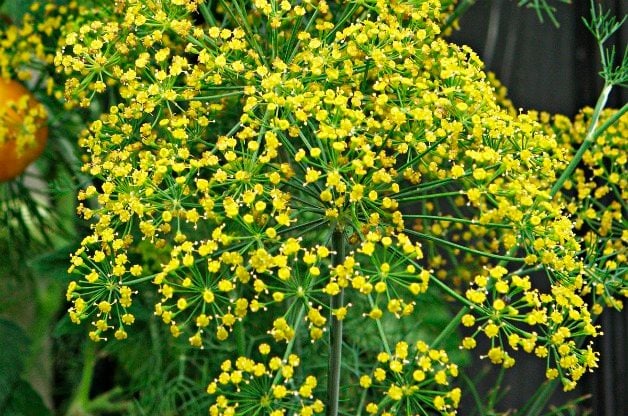
Dill
Anethum graveolens, annual
While dill grows well in the garden alongside tomatoes, sweet peppers or chilies, it needs space to flourish. Since it’s easy to grow in full sun, I’ll try planting my own this time around. I’ve been warned it likes to seed itself, so keep that in mind. Dill is also a top butterfly host plant.
Tastes great in: Calling all pickle fans! Summer is the perfect time to make your own fresh, delicious dills. When it’s warm out, I could polish off a jar of these crunchy treats pretty quickly all by myself.
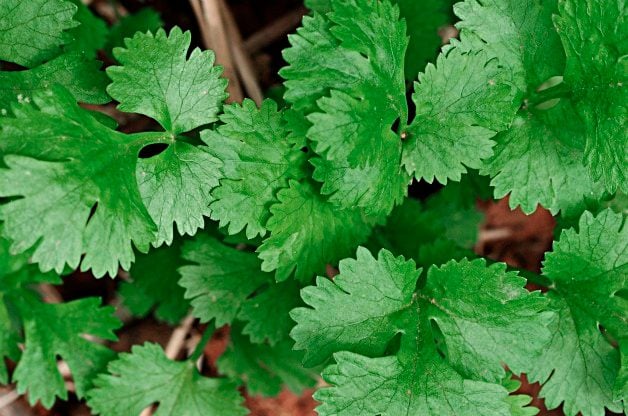
Cilantro
Coriandrum sativum, annual
You may know this popular plant as coriander, a name it shares with the sweet spice made by drying the seeds. Cilantro plants, with their aromatic dark-green leaves, do well in both gardens and containers. The tiny white flowers attract beneficial insects, so try spreading these plants throughout your garden.
Tastes great in: Cilantro leaves are a must in Mexican cooking and many Asian cuisines. Try fiesta grilled corn or cilantro potatoes for dinner tonight. Sounds good to me!
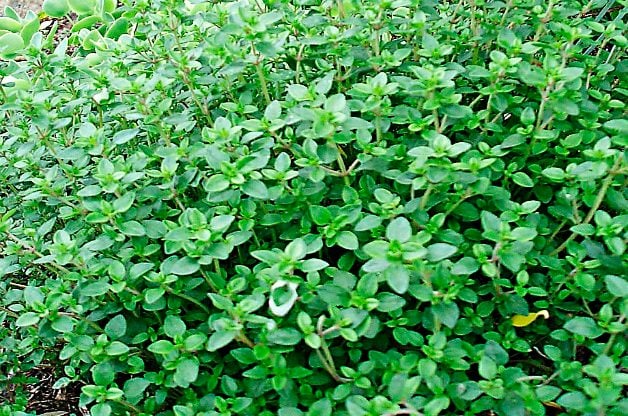
Thyme
Thymus spp., Zones 5 to 9
It’s also very easy to grow thyme on a south- or east-facing windowsill. Adorned with pretty purple, pink or white flowers, this silvery herb likes containers at least 6 inches deep. Avoid overwatering and be sure to pinch back the tips to encourage bushy growth, or simply snip entire stems at soil level. As long as you avoid overwatering, thyme will thrive in full sun and well-drained soil. For a flavor twist, plant a pot of lemon thyme.
Tastes great in: The tiny leaves of thyme add big flavor to soups, stews and marinades. Thyme is superb with sweet corn; try adding snippets to the butter before slathering it on a freshly grilled ear. I guarantee you’ll love it.
Learn how to grow a pizza garden in your backyard.
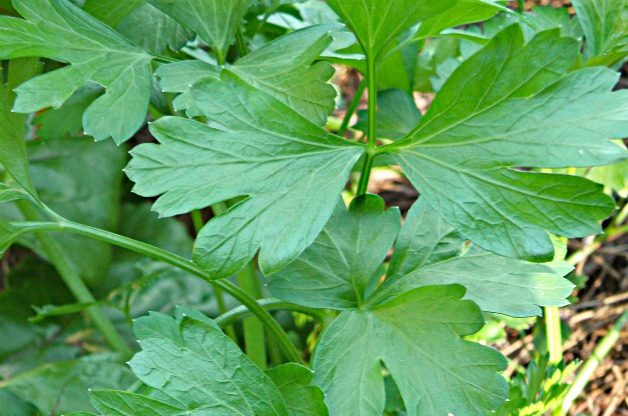
Parsley
Petroselinum crispum, annual
Let’s first distinguish between two popular parsley varieties. If cooking is your calling, flat-leafed Italian parsley has your name on it; it’s delicious in dozens of dishes. Looking for an attractive container plant or plate garnish? Curly-leafed parsley is the way to go. Both varieties are relatively easy to grow. Parsley is a great choice for a sunny windowsill where no supplemental lighting is available, as it can produce a good harvest in less light.
Tastes great in: Grab your calendar and make note of summer cookouts and tailgating parties. When a potato or veggie salad is your dish to pass, you’ll be grateful for the fresh green sprigs and leaves from your parsley plant. Parsley adds bright flavor to pastas, soups and salads. Watch for swallowtail caterpillars, too.
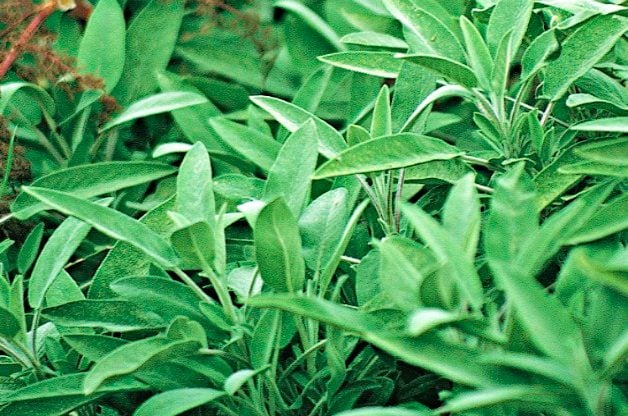
Sage
Salvia officinalis, Zones 5 to 9
Here’s a champion herb to grow if you ever saw one, a species that works equally well in borders, beds and containers. The gray-green, chartreuse or dusky-purple foliage is an eye-catching accent to any planting. After four years, the plant becomes woody and may need to be replaced. It’s easy: Just take a cutting and start a new plant.
Tastes great in: While many of us add sage to turkey or chicken stuffing around the holidays, it’s also an enchanting addition to couscous, quinoa and other grains.
Grow Pineapple sage for cool-season pollinators.
Sources:
- Sugar Snaps and Strawberries by Andrea Bellamy
- Bonnie Plants
On This Page
Grow Host Plants to Attract Butterflies
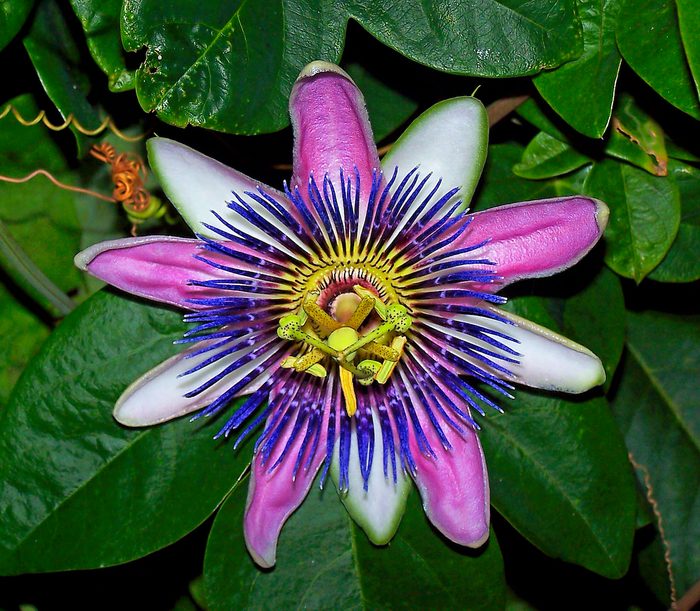
We just can’t stress enough how important it is to have host plants in your garden plan to attract and help butterflies. Milkweed is important for monarchs, but don’t stop there.
Check out our top 10 butterfly host plants.
Add Native Plants
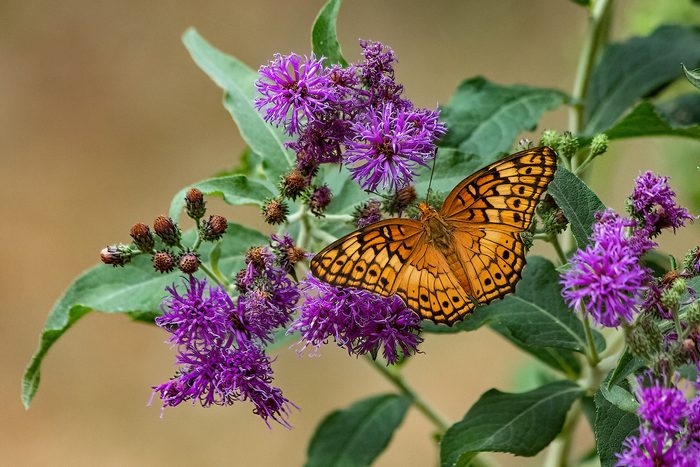
Native plants are naturally better for birds, bees and butterflies. If you’re overwhelmed about where to start, look up a good native plant source in your area. Then ask them what they recommend.
How does a butterfly survive winter?
Eliminate Pesticides
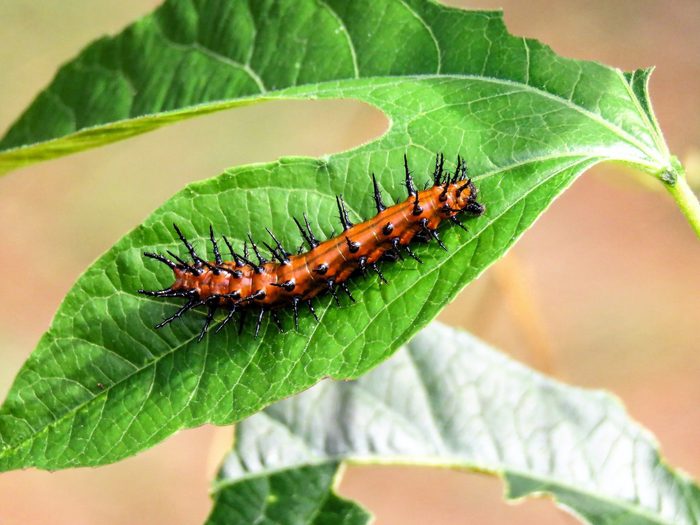
A caterpillar isn’t going to make it to the butterfly stage if you’re using pesticides in your yard. While it’s tempting to have weed-free, green lawns, to help butterflies it’s best to say no to yard chemicals.
Transform your yard into a butterfly migration hotspot.
Pick Flowering Plants with Long Blooming Time
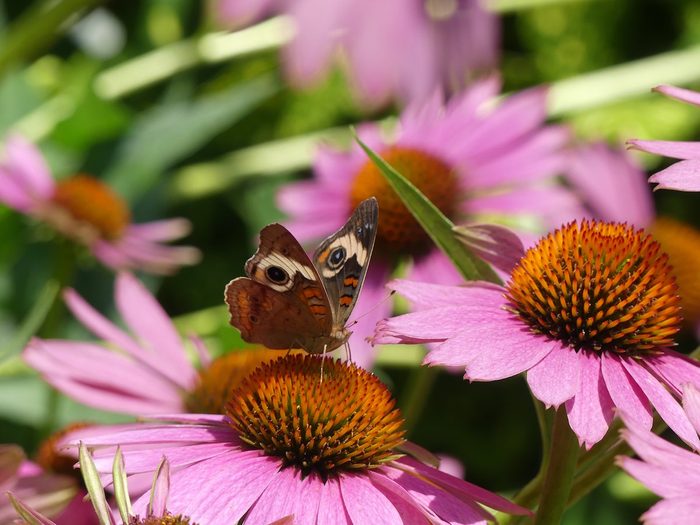
Butterflies are active as early as February and as late as November in many areas. (Of course, if you live in a warmer climate, you get an even longer butterfly season.) To help butterflies, offer plants with early and late season bloom times, so they always have something to eat. You can’t go wrong with this logic. It works great for attracting beneficial bees, too!
Here’s 16 long-blooming flowers for attracting butterflies and hummingbirds.
Watch the Butterflies That You Attract
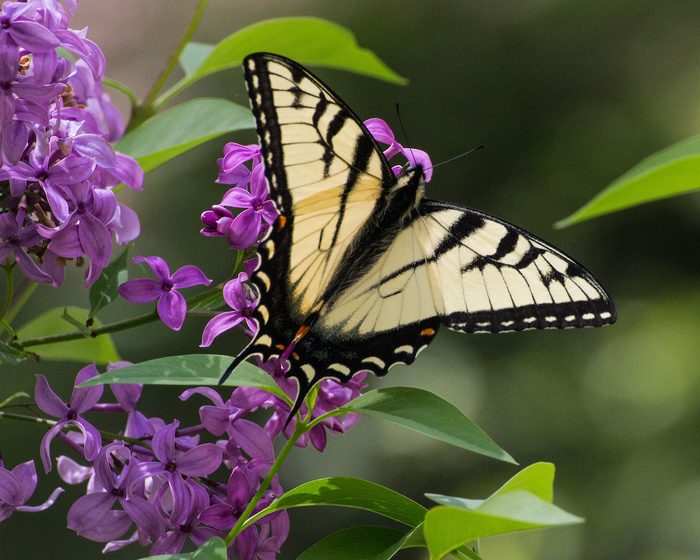
One of the best ways to discover which plants butterflies like is to watch them! Butterfly watching is best done in the heat of the day. You can learn a lot by observing the plants they visit most. If you don’t have a lot of butterfly activity in your own yard, go to a local park or botanical garden.
Check out the best monarch butterfly flowers you should grow
- More milkweed is better to attract monarch butterflies. Milkweed can be surprisingly hard to get started, so overseed to increase your chance of success.
- If you can’t get milkweed seeds started, buy plants. Native gardening groups can point you in the right direction for suppliers.
- Look for variety. With more than 100 species of milkweed, what works for some might not work for others. Don’t be afraid to try a few.
On This Page
1. Fir Tree Needles Are Softer
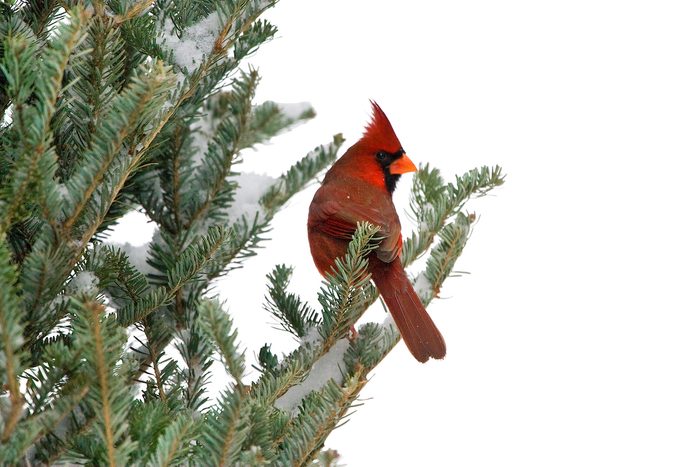
Fir and spruce needles are attached to twigs one by one, while pines grow needles in bunches. Fir tree needles are soft and flat, while spruce needles are stiff and angular.
Check out the best types of evergreen trees to grow.
2. Fraser Firs Are Long Lasting
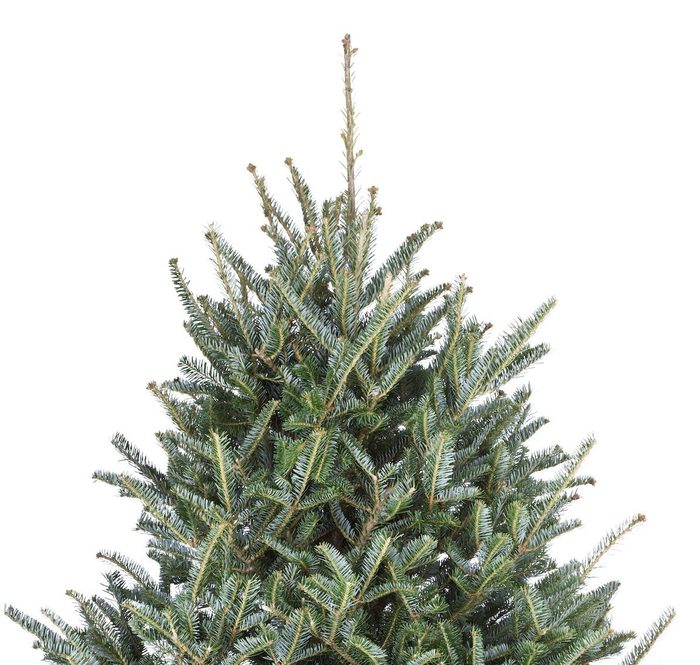
Lasting seven weeks or more, Fraser firs typically retain their needles longest after being cut.
Grow a dwarf Colorado blue spruce for evergreen beauty.
3. Balsam Firs Have a Slow Growth Rate
Balsam firs grow about 12 inches a year, taking nine to 10 years to get to the ideal Christmas tree height. So be patient!
A Norfolk Island pine is an adorable mini Christmas tree.
4. Douglas Firs Tower Over Other Trees
Douglas firs reach a height of 300 feet or more in the wild. Despite the name, this tree is not a true fir, pine or spruce.
Don’t miss our complete guide to growing holly trees and berries.
5. Look to the Cones for a Tree Clue
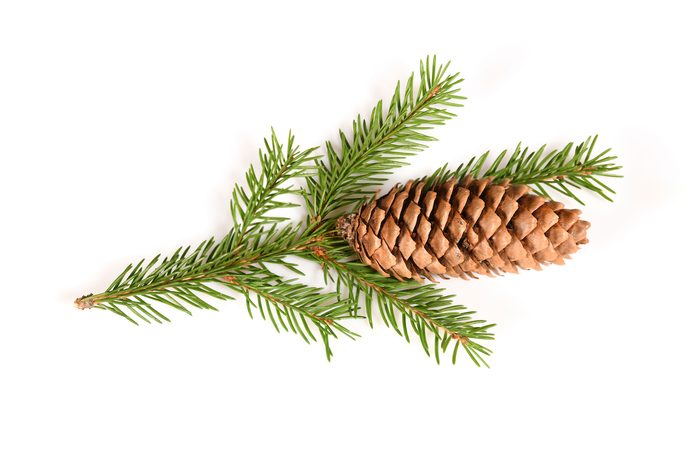
Fir tree cones stand upright from branches rather than hanging down. They vary in size from 1 1/2 to 10 inches.
Learn fascinating facts about conifer trees.
6. Centuries Long Lifespan
Firs are generally long-lived, with the Pacific silver fir sometimes surviving 800 years.
Plant these small evergreen shrubs for year-round curb appeal.
7. High Elevation Fir Trees
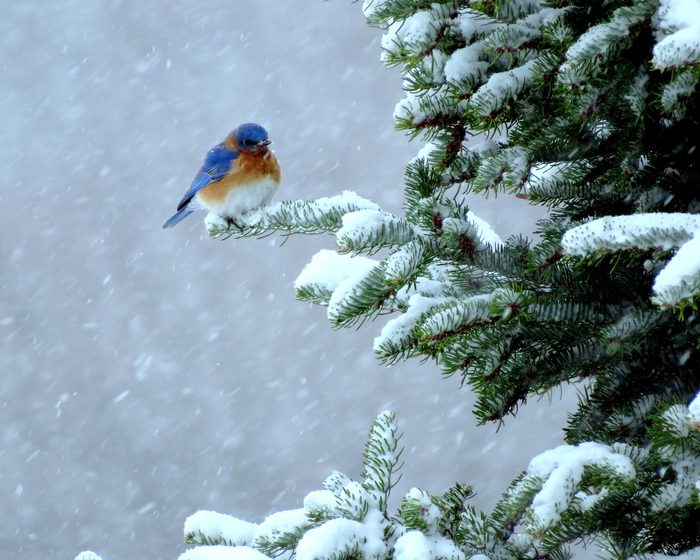
Fraser firs are mountain trees. They grow wild only in the Appalachians at altitudes of 4,500 feet or higher.
Next, discover 8 types of Christmas trees you can grow.
Sources
- https://www.conifers.org/pi/Abies_amabilis.php
- https://www.dnr.wa.gov/publications/lm_hcp_west_oldgrowth_guide_psf_hires.pdf
- https://ipm.missouri.edu/MEG/2018/12/coneBearingPlants/
- https://www.arborday.org/trees/treeguide/TreeDetail.cfm?ItemID=1106
- https://gardentherapy.ca/pick-the-best-christmas-tree
- https://www.farmersalmanac.com/popular-christmas-tree-varieties-29268
- https://www.gardenguides.com/12321051-balsam-fir-tree-facts.html
- https://www.arborday.org/trees/treeguide/TreeDetail.cfm?ItemID=1105
- https://www.srs.fs.usda.gov/pubs/misc/ag_654/volume_1/abies/fraseri.htm
- https://ncchristmastrees.com/fraser-fir-trees/
- https://plants.ces.ncsu.edu/plants/pseudotsuga-menziesii/
- https://www.nwf.org/Educational-Resources/Wildlife-Guide/Plants-andFungi/Douglas-Fir
- https://www.extension.iastate.edu/news/2005/nov/061401.htm
- https://www.canr.msu.edu/news/pine_spruce_or_fir_getting_to_know_michigan_evergreen_trees
Nearly 30 million real Christmas trees are sold each year in the United States. Most of these are grown on tree farms, and the types of Christmas trees they grow vary by region. The ideal Christmas tree is one that grows quickly, has sturdy branches, and retains its needles after cutting. Want to grow your own Christmas tree for the holidays? Try one of these popular types of Christmas trees.
Also check out our guide to the best types of conifer trees and how to grow them.
On This Page
Eastern White Pine
Pinus strobus, Zones 3 to 8
The long flexible needles on Eastern white pines remain on the tree long after it’s been cut, so you can put up these trees as early as you like. White pine has minimal fragrance, which may be good for allergy sufferers. They grow as much as 2 feet per year, so this tree will be the perfect size for decorating in a short time. It tolerates most types of soils and conditions, and is beloved by wildlife.
A Norfolk Island pine is an adorable mini Christmas tree.
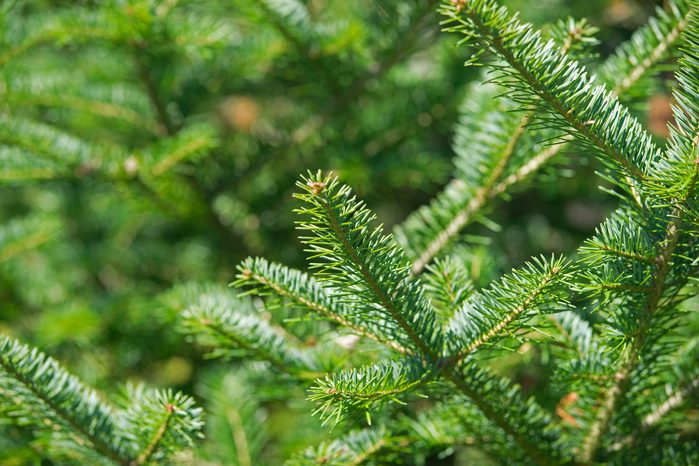
Balsam Fir
Abies balsamea, Zones 3 to 5
Need a tree that thrives in colder climates? Balsam fir is the way to go! This tree demands cooler temperatures and moist soils, making it a popular Christmas tree types in northern areas, where it grows about 1 foot per year. The needles are highly fragrant, and are used outside of Christmas to stuff pillows and create other scented gifts.
Don’t be alarmed by blisters on the bark of young specimens; this is the “balsam” resin the tree is named for. This resin is used as a rodent repellent, essential oil, and in the preparation of microscope slides.
Don’t miss our complete guide to growing holly trees and berries.
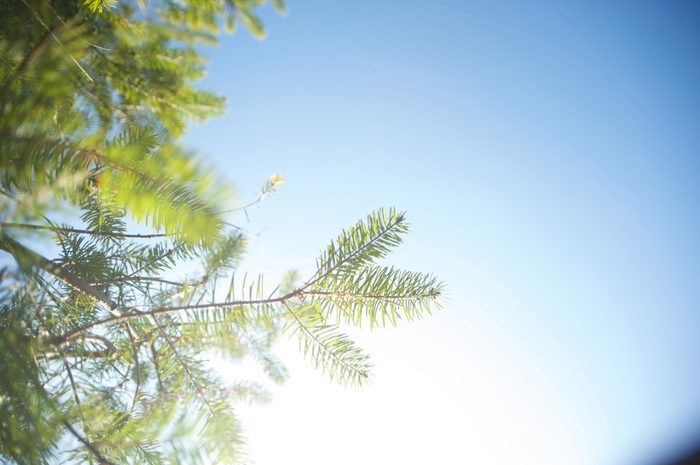
Douglas Fir
Pseudotsuga menziesii, Zones 4 to 6
This is the preeminent Christmas tree type in the Pacific Northwest, and it’s very popular in other parts of the country, too. The Douglas fir (not really a true fir due to the scales on its cones) has two varieties, one found in northwestern coastal areas and the other in the Rocky Mountains. Both are excellent choices for decorating, with long-lasting needles and robust branches.
Grow Douglas fir in well-drained soil and protect from drought. Expect it to put on 1 to 2 feet of growth each year.
Learn how to make a tomato cage Christmas tree for birds.
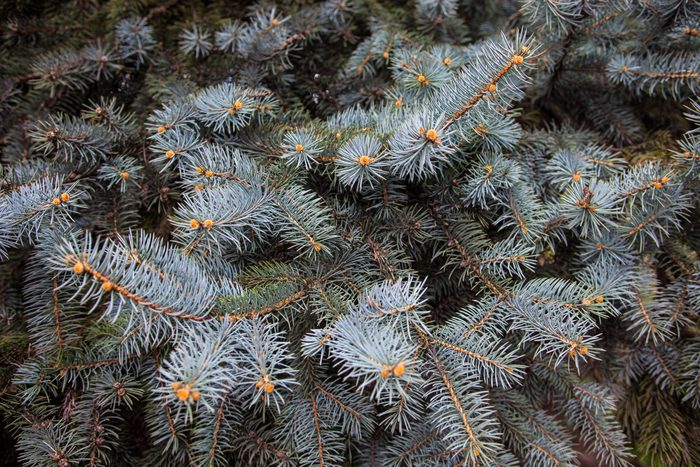
Colorado Blue Spruce
Picea pungens, Zones 2 to 7
The Colorado blue spruce stands on its own among Christmas tree types, widely admired for the lovely silvery-blue color of its needles. These needles give off an unpleasant odor when crushed and have very sharp ends, but that doesn’t stop the blue spruce from finding its way into Christmas decorations around the world.
As the name implies, it’s found in the Rocky Mountains of Colorado and the surrounding states, but it adapts well to many soils and climates. It grows at a rate of 1 to 2 feet per year, and requires little or no pruning to attain the perfect Christmas tree shape.
For smaller spaces, try a dwarf Colorado blue spruce.

Fraser Fir
Abies fraseri, Zones 4 to 7
Similar in many aspects to the Balsam fir, Fraser firs are native to the Appalachian mountain region of the eastern United States. The short needles are dark green on the top and silvery green underneath, often giving the tree a bi-color appearance. It has a rich aroma, and retains its needles well after being cut.
Grow it in cooler climates at higher elevations, provide well-drained acidic soil, and expect it to grow about a foot per year. Fraser firs are narrower than some other common Christmas tree types, making them a good choice for small spaces.
After Christmas is over, check out 5 creative ideas to recycle your Christmas tree.
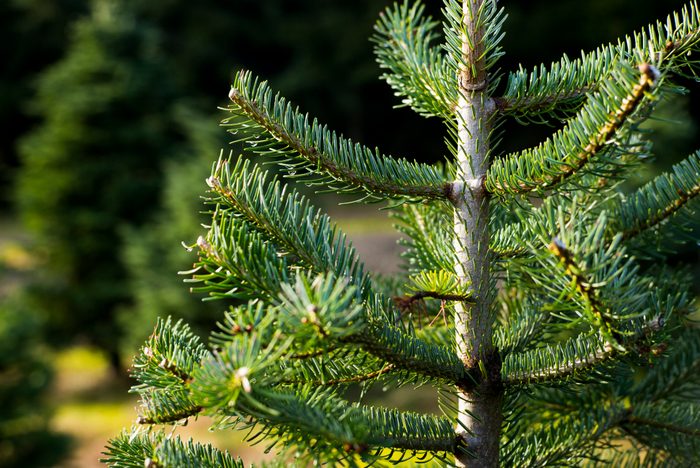
Noble Fir
Abies procera, Zones 5 to 6
Native to the Cascade and Coast Range mountains of the Pacific Northwest, the noble fir earns its name with stiff sturdy branches and excellent symmetry. It grows best in cool moist soil but can tolerate rockier conditions if given extra irrigation. The cones on this fragrant fir are large, reaching more than 5 inches in length.
It grows about 1 to 2 feet a year, with strong branches that curve slightly upward—excellent for holding heavier Christmas ornaments.
Learn surprising facts about Christmas trees.
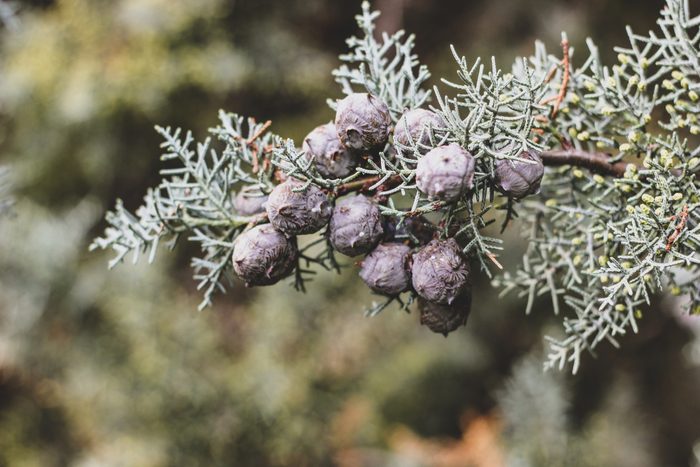
Arizona Cypress
Cupressus arizonica, Zones 7 to 9
Do Christmas trees grow in the desert? Perhaps not quite, but the Arizona cypress comes close. This tall, moderately-scented evergreen comes from the American southwest and northern Mexico, where it thrives in warm dry conditions once established. The bluish-gray foliage and conical shape make it an attractive and popular tree in many xeriscapes.
It’s fast growth rate (up to 2 feet a year) makes Arizona cypress a nice choice for a Christmas tree. Give it well-drained sandy soil and lots of sunshine.
Try these small evergreen shrubs for year-round curb appeal.
Red Cedar
Juniperus virginiana, Zones 2 to 9
Red cedars are one of the best types of Christmas trees to grow in the Deep South, since they tolerate the hot and humid summers. These trees have soft dark green foliage and frosty blue berry-like cones that birds and other wildlife enjoy.
Red cedar grows throughout the Eastern U.S. in nearly any soil conditions, adding about a foot or so a year to its height. The cedar aroma is unique and instantly recognizable.
Next, learn how to grow Gin Fizz juniper for a bush bursting with berries.
On This Page
What Does a Lucifer Hummingbird Look Like?

You might recognize a male lucifer hummingbird by its brightly colored purple gorget. Males are green-gray save for the gorget, rusty patches on the breast, and cream-colored feathers along the throat.
Females lack the vibrant gorget; instead, they have the same green-gray upperparts, buff or rusty underparts and a dark stripe by the eye. Both females and males have a curved bill.
Another good way to tell whether you’ve found a lucifer hummingbird is to make note of the bird’s environment. “Within their range, they’re pretty distinctive,” says Dr. Christopher J. Clark, hummingbird researcher and associate professor of Biology at the University of California – Riverside. “They’re this really classic Chihuahua desert hummingbird. In Texas and in Northern Mexico, in that kind of desert, they are the main hummingbird you will find in a really dry place with lots of cacti and not that close to water. The other hummingbird species that are around all like water more than they do.”
Meet the 15 types of hummingbirds found in the United States.
Lucifer Hummingbird Range
Unless you live in a very specific part of the United States, you’re not likely to find a lucifer hummingbird at your backyard sugar water feeder. “They have a small breeding range in the United States, and the main place where you’d find them is in Big Bend National Park,” Christopher says. “They are pretty much desert birds. There were reports of them showing up in Texas a few hundred miles outside of their normal range back when there was an intense drought, but that’s probably because they had so few flowers in their natural habitat that they were leaving their natural habitat to look for food sources.”
You might track one down in Arizona or other parts of Texas, but they’re generally considered a rare visitor. Christopher notes their range in southern Arizona and Big Bend National Park.
One Birds & Blooms reader spotted this bird in the Davis Mountains in Texas, well-known for being a hummingbird haven—annual hummingbird celebrations are even hosted there.

“This is a beautiful male lucifer hummingbird (above). The photo was taken high in the Davis Mountains in far west Texas. Every summer, thousands of hummingbirds call the Davis Mountains home. This was a lifer for me, meaning it was the first time I ever saw this bird. I look forward to returning in summer for, hopefully, more surprises,” says reader Randall Patterson.
Learn how to attract hummingbirds with 10 expert tips.
Lucifer Hummingbird Courtship and Nests
Christopher notes some unusual courtship and nesting practices in these hummingbirds which set them apart from other species.
“Females will often already have a nest and already have eggs, and the male will come up and do displays to the female while she’s already sitting on the nest,” he explains. “That’s confusing, because we think of courtship displays as the male trying to impress the female if she’s going to make a mating decision later. But she’s already made a mating decision. She already has a nest. It’s not entirely clear why they do this.”
He goes on to note that these birds build their nests in an unusual location: on prickly chollo cacti. This makes it easier to defend the nest from predators, but the lack of shade means female hummingbirds have to find other means of shading eggs from the sun.
“What will happen is when it’s hot and there’s direct sun on the nest, the female will stand on the side of the nest and hold her wings open to shade the eggs,” he says.
Sound and Calls
Bird songs courtesy of the Cornell Lab of Ornithology
How Did the Lucifer Hummingbird Get Its Name?

“Is a lucifer hummingbird named after the devil?” asks reader Mike Froio of Rome, New York.
Birding experts Kenn and Kimberly Kaufman explain, “At first glance it seems shocking. What did this little bird do to deserve such a name? But the British scientist William Swainson probably wasn’t thinking of the devil when he named this bird in 1827.
The name “lucifer” has had various meanings. For example, in ancient Rome it was the name given to Venus when that planet appeared in the morning sky—appropriately enough, since lucifer is based on Latin words meaning “light bearer” or “light bringer.”
Swainson probably chose the name after seeing how light reflected from the brilliant purple throat of the male lucifer hummingbird.
Next, meet the magnificent Rivoli’s hummingbird.
About the Experts
Kenn and Kimberly Kaufman are the official birding experts for Birds & Blooms. They are the creators of the Kaufman Field Guide series and they speak and lead birding tours all over the world.
Dr. Christopher J. Clark is a hummingbird researcher and associate professor of biology at the University of California – Riverside.
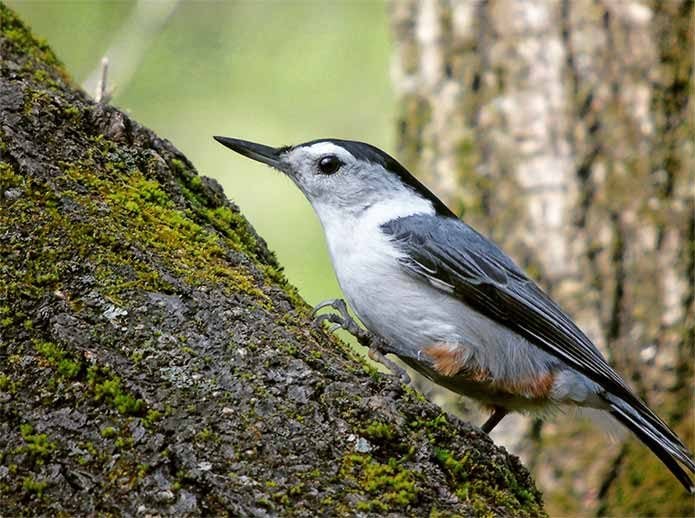
Fall is one of the best times to become familiar with birds that stick around throughout the seasons, such as the charismatic white-breasted nuthatch. These gray-and-white residents don’t like sharing their space with other nuthatches, but will happily hang out with other species at the feeder.
Get to know the gravity-defying nuthatch bird family.
On This Page
What Does a White-Breasted Nuthatch Look Like?
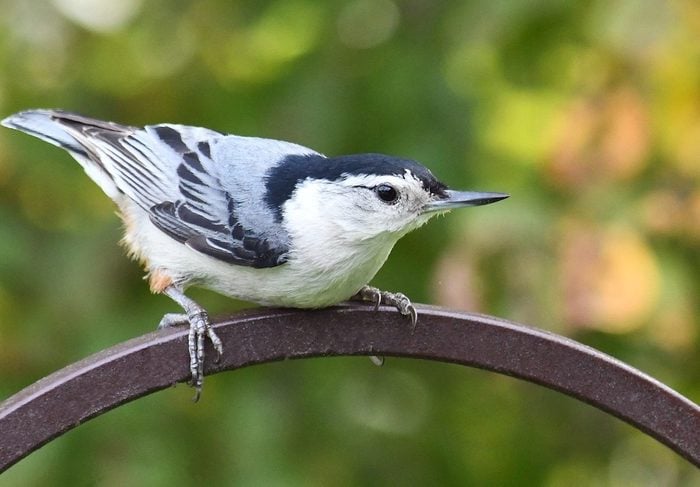
White-breasted nuthatches have short tails, white undersides and are bluish gray on top with a dark cap. They measure 5-1/2 inches with a wingspan of 11 inches, making them the largest of the three types of nuthatches found in the United States. To tell males and females apart, look at their heads. “The male’s cap is jet black, while the female’s is more grayish,” says Emma Greig, project leader of FeederWatch with the Cornell Lab of Ornithology.
Birding experts Kenn and Kimberly Kaufman explain why these birds might be tricky to identify based on the pictures in your field guide. “The nuthatches are famous for being able to climb down tree trunks headfirst, and they’re usually illustrated with their heads down. So when they’re right side up, they may look a little odd or confusing.”
White-breasted nuthatches are common throughout the U.S. Whenever you see a bird going headfirst down a tree trunk, it’s probably a nuthatch. Extremely fun to watch, they are among the most acrobatic bird species.
Watch your fall feeders for a red-breasted nuthatch.
What Do White-Breasted Nuthatches Eat?

When hunting for spiders, weevils or ants, acrobatic white-breasted nuthatches can clamber up and down around tree trunks, inspecting all the nooks and crannies along the way. Depending on the season, they also eat sunflower seeds, peanuts or mealworms—and they always welcome suet. In winter, white breasted nuthatches trade insects for seeds and nuts like acorns.
With their versatile feeding style, any type of feeder suits them, but Emma says they won’t stay at the feeder for long. “They will take a seed, then crack it and eat it elsewhere. They also cache seeds in tree bark,” she says. Nuthatches may do this to avoid predators or competition with other birds, such as chickadees. Fill up your feeders with treats to get to know the white-breasted nuthatches that call your backyard their home.
Discover the foods nuthatches love to eat.
Nest and Eggs

Find white-breasted nuthatches in deciduous woodlands, where they nest in small tree cavities, such as the ones that woodpeckers excavate. Dead trees offer fantastic habitat for nuthatches and other birds. Before removing an old tree on your property, Emma says, “Always remember it might be a good little nuthatch home.”
The female builds a cup-shaped nest, lining it with feathers, grasses and soft materials, where the pair raises one brood of five to nine eggs per nesting season. Their eggs are white with reddish-brown markings.
After building a nest, an adult white-breasted nuthatch sometimes sweeps a crushed insect around the outside of the nest with its bill. The chemicals from the bug might dissuade predators.

White-breasted nuthatches occasionally use nest boxes, so you may get lucky and have a nesting pair in your backyard.
Learn how to tell the difference between a nuthatch vs a chickadee.
Call and Sounds

Listen to the white breasted nuthatch’s song. You’ll hear a nasal “yank-yank-yank” call.
Bird songs provided by the Cornell Lab of Ornithology.
“I love hearing the white-breasted nuthatch calls. They’re very distinct, and the way they cling to trees is beautiful,” says Birds & Blooms reader Selena Ross of Colorado Springs, Colorado.
Head south to see a brown-headed nuthatch.
Range Map and Habitat

Look for this species in areas with plentiful trees. You can spot them in their range throughout the year.
“They’re a nonmigratory bird,” Emma says. These nuthatches form long-term bonds and defend their home space. She says, “People will have the same pair of birds in their yard. You might see them creeping up and down a tree or on a tube feeder.”
Even though they won’t share their territory with other nuthatches, Emma points out that white-breasteds are neighborly with other birds, flocking with chickadees and titmice. This behavior is common in winter, when it’s beneficial to have more eyes watching for predators.
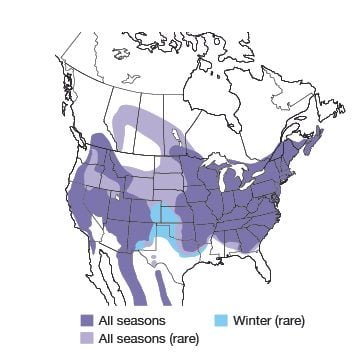
Range maps provided by Kaufman Field Guides, the official field guide of Birds & Blooms.
Sources:
- Cornell Lab of Ornithology
- National Audubon Society
- Kaufman Field Guides
1. What Is a Succculent?

This one of our facts about succulents might surprise you. “Succulent” is a loose term with no single definition. It refers to any plant with fleshy parts—leaves, stems, or roots—that store moisture to tolerate drought.
Check out the top 10 colorful succulents you should grow.
2. One Succulent Blooms Once a Decade
The century plant’s name might make you think it blooms every 100 years, but it actually blooms every 10 to 15 years.
These seriously cool succulents make great houseplants.
3. Some Gardeners Can Grow Succulents Outdoors

Some say echeveria is the most attract of all succulents. If you’re in Zones 9 to 11, give this beauty a try in the garden; it’s a classic drought-tolerant roseate succulent. Everyone else? Grow it as a houseplant or in an outdoor container during the warm months.
Learn how to grow a flock of hens and chicks plants.
4. Aloe Vera Attracts Hummingbirds
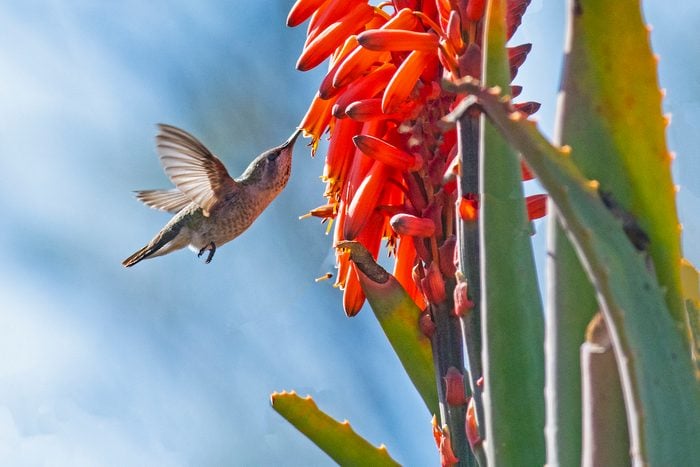
There are more than 250 species of aloe plants in the world. In the United States, aloe can generally be grown outdoors only in Florida, California and Texas. Residents of those states might notice hummingbirds stopping at blooming aloe plants for a sip of nectar!
We found the best succulents to attract pollinators.
5. Are Cacti and Succulents the Same?
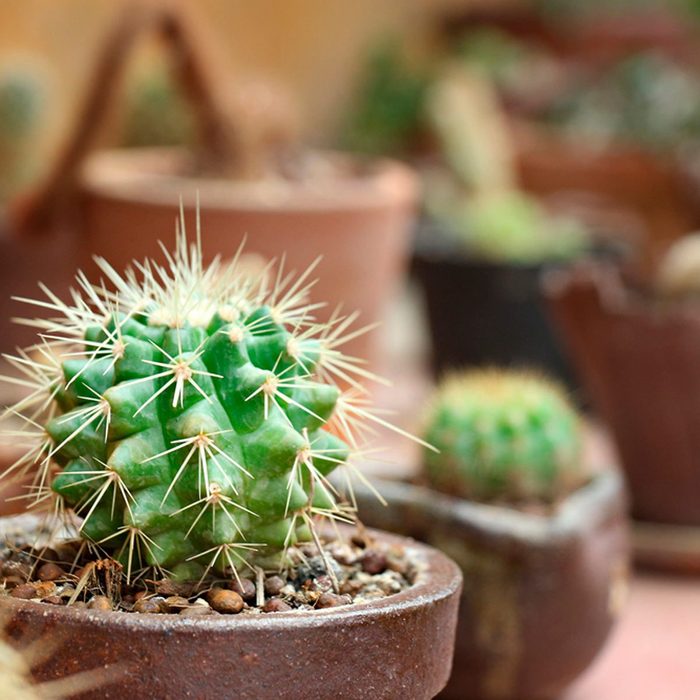
Cacti alone make up more than 1,300 species of the succulent group. However, keep this one of our facts about succulents in mind: All cacti are succulents, but not all succulents are cacti.
Discover fascinating facts about Christmas cactus.
6. Succulents Are Versatile Garden Plants
Succulents are amazingly diverse plants, because they can be used in so many ways throughout landscapes. Try using them in one of these five ways: container, roof gardens, vertical gardens, garden beds and borders, and rock gardens.
Love flowers? Check out the top 10 flashy flowering succulents.
7. Some Succulents Are Cold Hardy
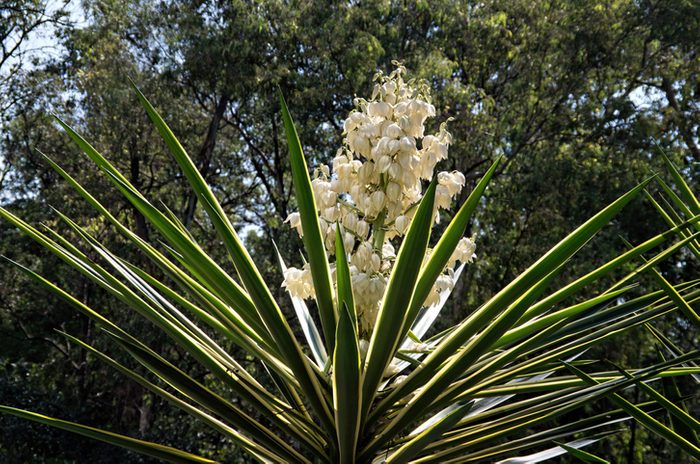
Living in the north doesn’t mean you can’t have a little desert appeal in the backyard. Cultivars of these three hardy groups are great options for cold-climate gardeners.
- Optunia (prickly pear)
- Agave
- Yucca
Psst! Here’s how you can grow your own succulent container garden.
On This Page
Did Your Plant Hardiness Zone Change?

In 2023, the USDA modified its Plant Hardiness Zone Map for the first time in 11 years. As a result of incorporating temperature data from more locations and a more recent time period , certain growing zones have shifted. Some regions of the country have increased by half a zone (for example, from Zone 6A to Zone 6B, or 5B to 6A), while others have not.
“The new USDA Plant Hardiness Zone Map provides greater insight into the average minimum winter temperatures across the country,” says horticultural expert Melinda Myers. “As in the past, it does not reflect the extreme cold temperatures outside this average that can occasionally occur. Use the Plant Hardiness Zone Map information along with your region’s summer heat, average rainfall, soil type, sunlight and wind when selecting the best plants for your gardens and landscapes.”
Learn how to find the first and last frost dates in your region.
Find Your New Plant Hardiness Zone
As Melinda advises, take a look at the USDA’s revised Plant Hardiness Zone Map online. Identify your location, enter your zip code, match the color in your region with the key next to the map, and voila: that’s your number. You may want to choose plants that are one zone hardier than your region, just for a bit of added cold-snap insurance. (If you’re in Canada, you can find your Plant Hardiness Zone Map here.)
Each of the 13 zones represents a 10-degree Fahrenheit band of minimum winter temperatures. Those areas are then subdivided into 5-degree segments (that’s why you may see “a” or “b”) to more precisely represent that area within each section. You’ll also notice that the lower the number, the colder the winter temperatures.
As you look at the map, you may notice islands of warmer or colder plant zones within the band of another. Large bodies of water, urban heat islands (urban areas are warmer than rural areas because of human activity), mountains and valleys influence the surrounding climates and growing conditions. These microclimates also exist within your landscape. Sheltered areas may allow you to grow less-hardy plants, while more-exposed areas require tougher specimens.
Follow Melinda’s tips for making the most of gardening zone.
Why Do Plant Hardiness Zones Matter?

When you’re at the garden center or shopping from an online nursery, a plant’s zone is always clearly marked on the plant tag (above), seed packet or online profile (the exception is annual plants, which only typically live for one growing season). These hardiness zones reflect the average minimum cold temperatures for a region and tell you whether the plant will survive the winter in your backyard. If your hardiness zone is within the listed range, the plant has passed the first test for growing success.
For example, my Wisconsin home is in Zone 5b, where the average minimum winter temperature range is -15 to -10 degrees Fahrenheit. Although the temperatures rarely get that cold (and in some years it may be even colder), it’s crucial that I buy plants that tolerate deep winter chills. When you push the limits of your zone, as many gardeners do, you risk failure when temperatures drop below the limits that a plant can endure.
Learn more about winter dormancy and chilling for plants.
Choose the Right Plants for the Right Place
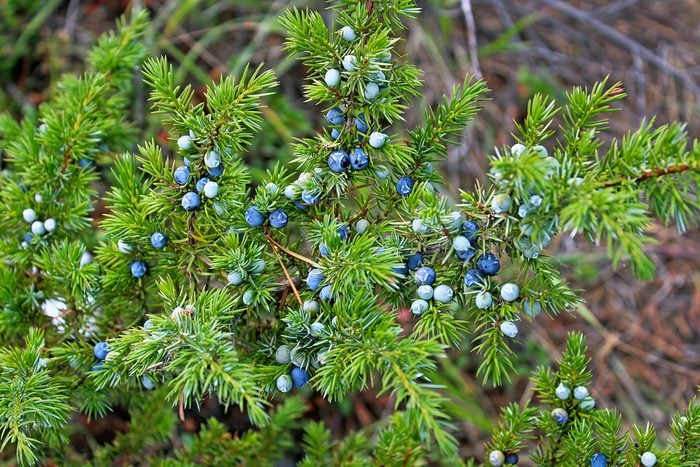
Now you know that you’ll have the most success with the least effort when you grow plants that perform well in your specific hardiness zone. For absolute success, take it one step further. Think about choosing the right plant for the right place. Make sure the plants you choose are suited to all the growing conditions in your landscape.
Once again, check the tag, seed packet or online plant profile to know for a fact that your selection will receive the sunlight, soil type and moisture it needs to thrive. Then make sure there is sufficient space for it to reach full size; it’s amazing how fast those little plants at the garden center grow into large specimens.
It’s also a good idea to find a native plant society in your area or connect with your local extension office. Master gardeners and native plant experts can recommend options that will flourish in your plant zone and growing conditions.
All these factors together will lead to a healthy, thriving and beautiful backyard.
Next, learn how to prepare and prune roses for winter.
